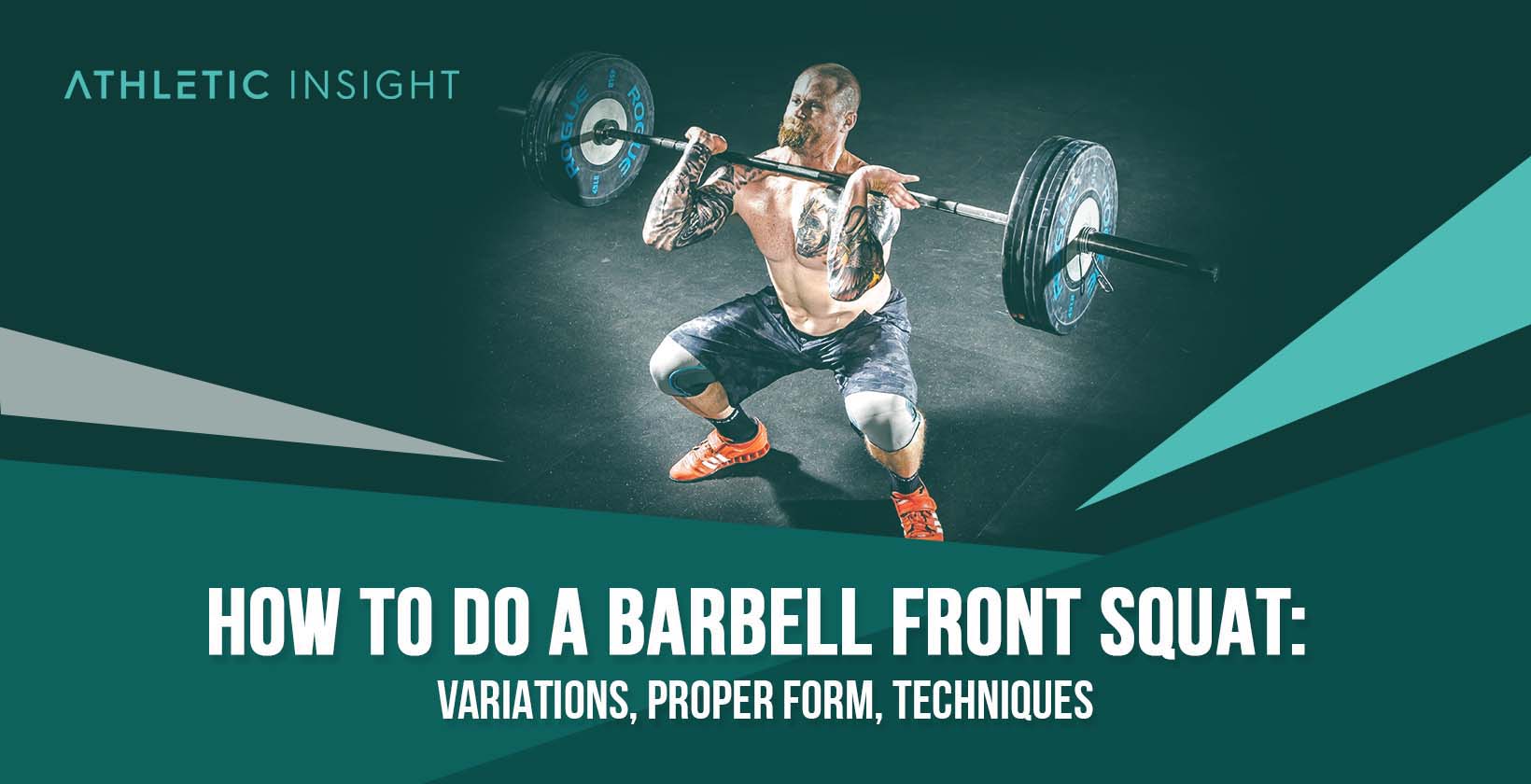The barbell front squat is a compound lift exercise targeting the quadriceps, gluteals, hips, and hamstrings to build strength, endurance, and mass. It involves resting a barbell on the front of the shoulders rather than behind the head.
One primary benefit of the barbell front squat is reducing pressure on the knees and shoulder joints during the movement. This feature makes it an ideal exercise for many who want to build lower body strength but are mindful of the knees or shoulders.
There are many substantial benefits of this compound exercise, such as improving core strength, preventing injuries, building lower body strength, improving posture, and enhancing balance. Naturally, any squat movement will require lower body strength, but there are many supporting muscles the barbell front squat requires, such as the core, upper back, and erector spinae.
Proper form is critical when performing any exercise, especially compound movements, like the barbell front squat. Because the barbell sits in front of the body, it alters the center of gravity. As a result, this exercise is more challenging and is easier on the spine.
It is critical to remember some key points for proper form when learning to master barbell front squat. These include; Keeping the core muscles engaged and tight, ensuring the chest is facing up and not leaning over or facing the ground, not dropping the elbows, and driving the knees outwards rather than inwards during the squat.
Naturally, there are several variations of the main barbell front squat movement. Each alternate method will have advantages depending on the individual. These include the clean grip, cross grip, clean grip with straps, dumbbell front squat, and kettlebell front squat.
Avoiding mistakes during compound movements is critical to remain injury-free and eliminate pain. By recognizing common mistakes such as holding the barbell with the arms or releasing the core, you can ensure you do not suffer from related injuries.
How to Perform a Barbell Front Squat with Proper Form?
Performing a barbell front squat with proper form is simple, no matter which variation you execute. As mentioned previously, some key points include keeping the chest upright and facing front, not using the hands, and flaring the knees outwards during the squat.
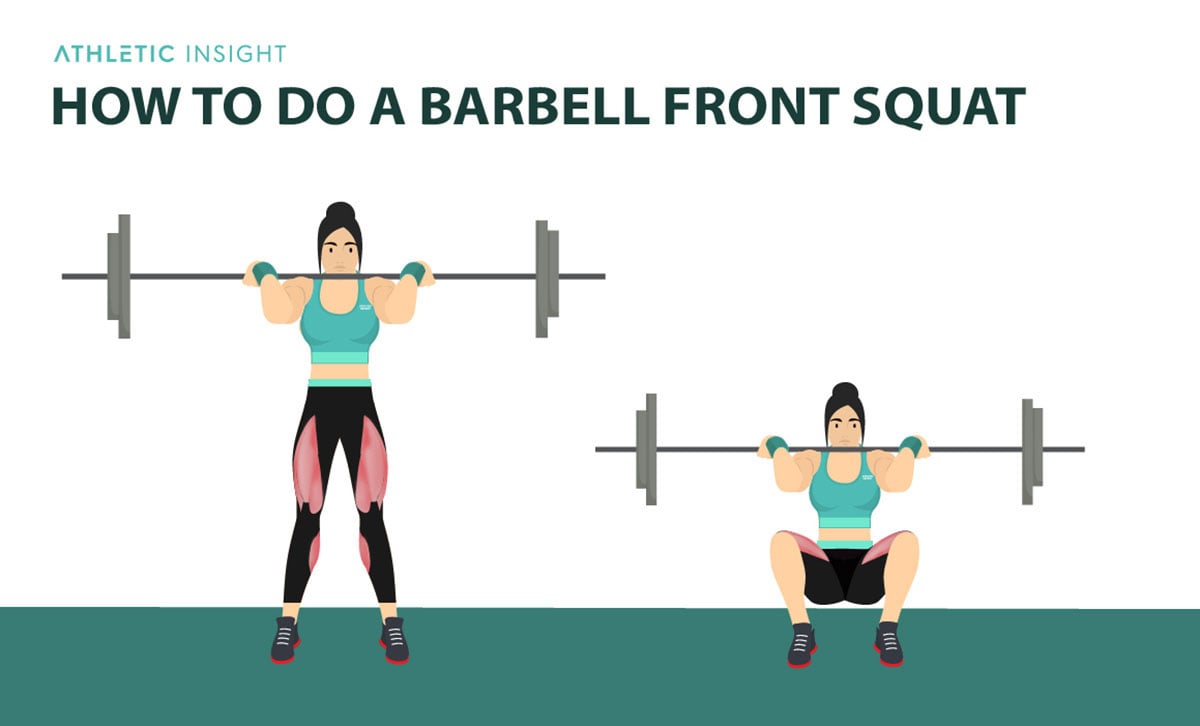
Before starting this exercise, position the feet at shoulder-width or hip-width apart, with the toes flaring out slightly. Then, inhale, engage the core muscles and keep the chest up. Next, focus on pulling the shoulder blades back and down.
Next, bend at the knees and push them outwards as the hips move back while you begin to descend toward the floor. Maintain a high chest and keep the elbows up. Continue squatting until the thighs are parallel or as close to parallel as you can get to the ground.
Finally, push through the bottom of your feet as you force the weight up again using strength from the legs, not the arms. You should engage the quads and glutes. When you reach the top, flex the glutes, and the hips will extend slightly.
What Are the Phases of a Barbell Front Squat?
Each phase of the barbell front squat serves a purpose during the movement.
- Start Phase of Barbell Front Squat: This phase involves barbell placement and correct form positioning.
- Descent Phase of Barbell Front Squat: The second phase lowers the barbell while maintaining the correct form.
- Bottom Phase of the Barbell Front Squat: This phase happens when the athlete reaches the lowest possible position. Ideally, thighs are parallel to the floor.
- Ascent Phase of the Barbell Front Squat: The next phase includes using force from the lower body to force the barbell upwards while using proper form.
- End Phase of the Barbell Front Squat: The final phase happens when you reach the top of the movement and extend the hips forward slightly.
What Are the Benefits of Doing a Barbell Front Squat?
While any exercise will provide numerous benefits to an individual with regular training, the barbell front squat will give athletes some critical advantages they will not get from other movements.

It is critical to follow the right front squat form throughout the exercise to reap full advantage of this movement.
- Helps to build strong quads. Alternating the barbell from the back of the shoulders to the front changes the muscle stress. As a result, this movement builds strong quad muscles and gains more muscle mass in less time.
- Develops back strength and endurance. A strong back is essential for all exercises and regular daily living. With weight in front, it forces the individual to be more mindful of correct upper body form, enhancing back strength and endurance.
- Strengthens the core of the body. Core muscles provide aid to the entire body. Building a strong back will also benefit the core and vice versa. It is easier to strengthen the back when the core is strong.
- It’s much easier on your knees. Moving the barbell to the front will minimize stress on these joints while providing a terrific lower body workout.
- It enhances mobility. Frequent exercise will improve mobility, especially when the lower body is involved. Stronger hips, legs, and core muscles aid in smoother motions, rotations and minimize the chances of injury.
What Are the Mistakes for Barbell Front Squat Form?
Of course, form Barbell Front Squat Mistakes can happen when performing a barbell front squat, especially if you are new to the movement. However, once you know a good barbell front squat form, you can correct any problems during the exercise.
Some common mistakes in the barbell front squat form include the following.
- Rounding the upper back
- Dropping the elbows
- Not forcing the hips back
- Bringing the shoulders to the ears
1. Rounding the Upper Back
It can be challenging to keep the back upright when there is significant weight on the front of the body. Rounding the upper back can create shoulder, neck, and back problems.
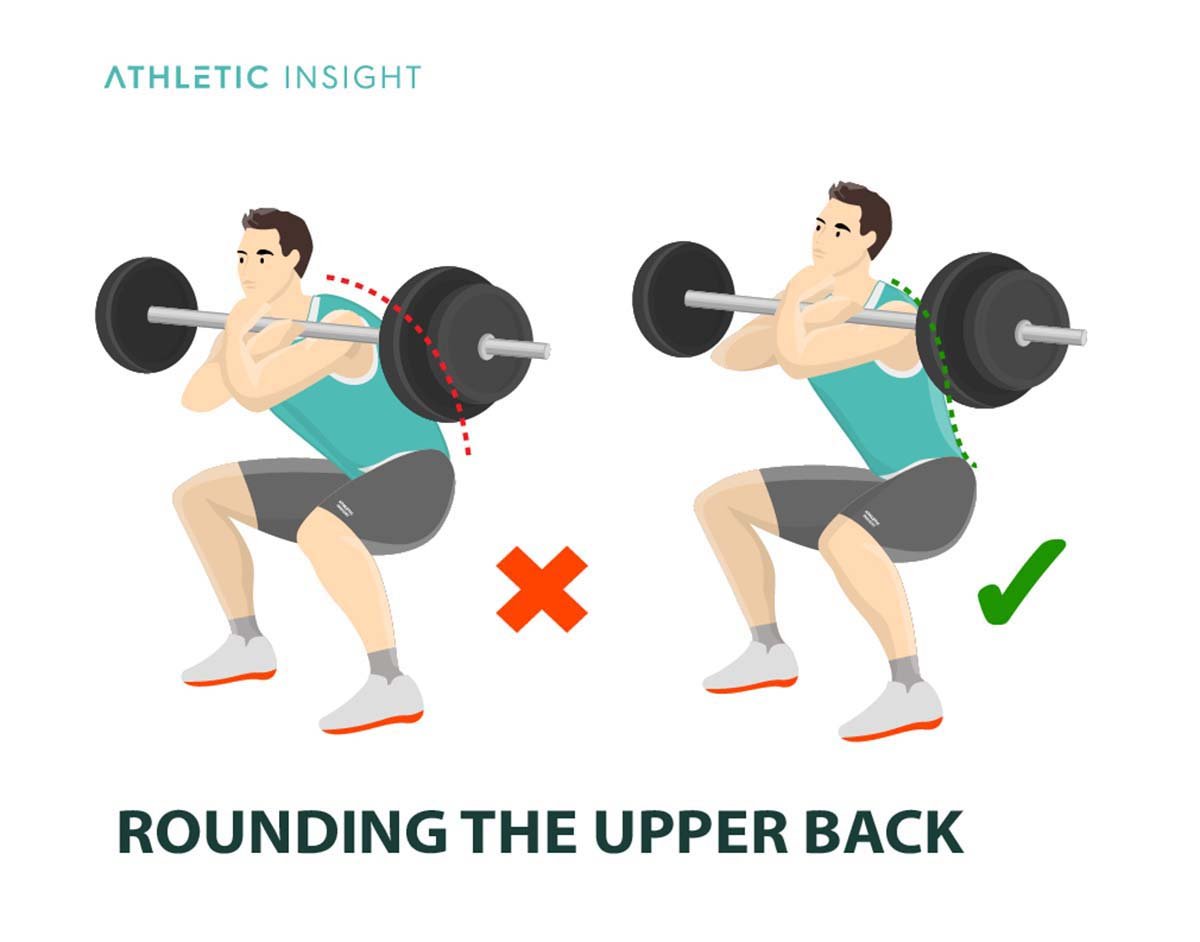
2. Dropping the Elbows
The elbows must be up and parallel with the floor at all times. If they aren’t, the barbell can roll forward or cause you to lean ahead and break proper form.
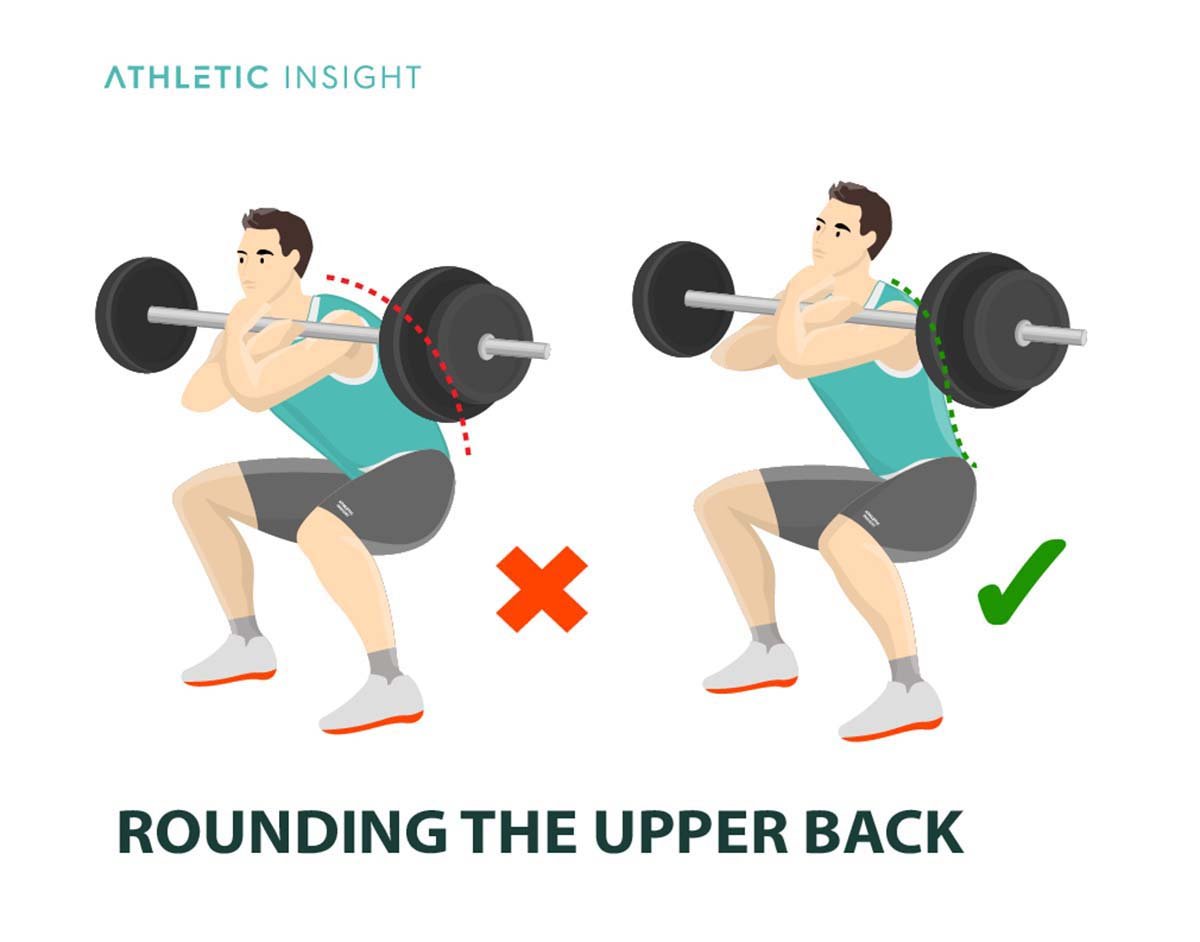
3. Not Forcing the Hips Back
While descending, the hips should push back as you sit back into the heels of the feet. If the hips are not back, the center of gravity will be off. This position increases instability and changes the front squat muscles’ focus.
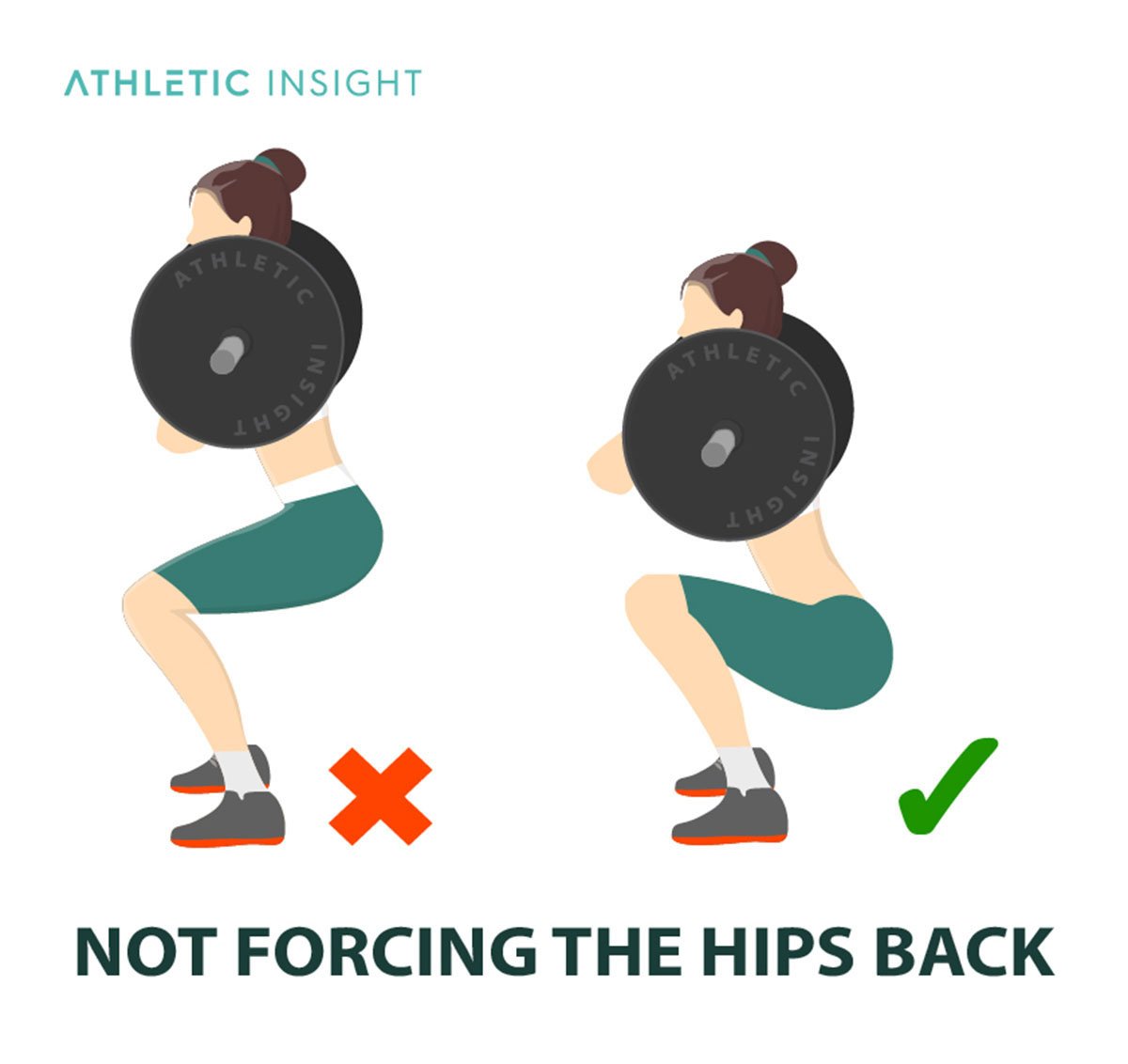
4. Bringing the Shoulders to the Ears
It is common to raise the shoulders when there is significant weight on the front of the body. By doing this, the core becomes disengaged, and the back will round, creating an improper form and a higher chance of injury.
How to Determine Proper Weight for Barbell Front Squat?
Because the barbell front squat shifts the center of gravity and changes the stress on the lower body muscles, it is vital to find the proper weight to ensure correct form and minimize injury.
Many athletes will stress that the front squat is more challenging than the back squat, but it is worth it in the end. There are also several front squat grips to use that can affect how much weight is possible.
Determining the proper weight you should use will depend on your fitness level and your experience with the movement. Beginners with no prior knowledge should begin the exercise with an empty bar to ensure they have proper form at all stages before adding weight.
Ideally, the barbell front squat weight should fall between 70 and 85% of the total back squat weight comfortable for you. For example, if you can comfortably do a barbell back squat with 200 pounds, the front squat weight should fall between 140 and 170 pounds.
What Is the Importance of Grip for a Barbell Front Squat?
When talking about grip with the barbell front squat, it may not necessarily involve the hands grasping the barbell as in other movements. Depending on hand placement, the fingers may rest just under the barbell, or you may hold straps to perform the exercise.
The gripping of the barbell should focus on the elbow placement. They need to be elevated and parallel to the floor at all times. If they drop, there is a risk of the barbell rolling off the shoulders and arms, causing the body to lean forward and break proper form.
Proper grip is essential for the front foot elevated split squat variation due to the chance for instability.
Which Muscles Are Involved While Performing Barbell Front Squat?
Anytime you perform a lower body exercise, you will engage the major muscle groups and supporting muscles. Although when comparing the back squat vs. front squat, they both use the same muscles, the muscle stress alters for different results.
Front squats call on the anterior muscles more than the posterior ones used for the back squat. In addition, because of the bar placement, athletes are more aware of posture and form during the movement.
The barbell front squat engages the following primary lower body muscles and supporting muscle groups.
- Quads
- Glutes
- Hamstrings
- Lower back
- Abdominals
- Shoulders
Quads
The anterior stress while performing the barbell front squat engages the quads more than the back squat due to the lowering movement that places force into the heels of the foot. Additionally, a front squat becomes unstable when energy is in the toes, making the quads more engaged during the descent and ascent phases.
The quadriceps, also known as quad muscles, cover the front and sides of the thigh area on the legs. They contain four distinct parts, reflecting the quad element of its name. These muscles begin at the hips, stretching out to the kneecap and shinbone. Their primary function includes aiding walking, running, standing movements, and other activities involving the legs.
Glutes
Balance and stability are vital for squat movements, especially when placing the barbell on the front of the body. The glutes are active in both front and back squat exercises, but the legs and knees are typically further apart during the front squat, creating more stress on the glutes for maximum strength training.
The muscles within the gluteal region, also known as glutes, contain two major groups for orchestrating movement. These include the superficial abductors and extenders and the deep lateral rotators. These muscles sit at the top of the femur, opposite the pelvic girdle.
The superficial abductors and extenders include three sections: the gluteus maximus, medius, and minimus, which control leg extension and movement. The deep lateral rotators are a smaller muscle group within the gluteal region to support femur rotation.
Hamstrings
The hamstrings are active with both squat variations, although they are not as engaged with the barbell front squat as with the back version. However, these muscles still help support the weight as you lower and raise it during each repetition.
The hamstring muscles consist of three parts, running from the pelvis down the back of the thigh to connect at the top of the lower leg. Their primary purpose is to bend the leg at the knee and extend the lower leg behind you. Exercises that work the legs and back will also engage the hamstrings, making the barbell front squat an ideal movement for improving strength and growth.
Hips
The hip joint connects the femur and the pelvis, including various muscles. The hip muscles help support the upper body and core truck while allowing mobility in the lower body. The 25 hip muscles, numerous tendons, and countless ligaments are complex systems that work together to provide mobility and stability for the upper and lower body.
Lower Back
Squats require a strong, straight back to perform the movement correctly. By holding the proper form during a barbell front squat, you engage the lower back muscles and strengthen the erector spinae and its corresponding muscles.
Abdominals
Core strength is vital during an exercise routine that involves major muscle groups, such as the lower body. Strong abdominals will help build back strength, ensuring your body can support weight as you perform a barbell front squat.
Shoulders
This movement requires the barbell to sit on the front of the shoulders. As a result, the arms will be parallel to the ground and elbows raised. This positioning helps support the weight of the barbell and builds shoulder strength.
You should be mindful not to use the shoulders when ascending and forcing the weight upwards, but instead use the lower body, leaving the shoulders in a neutral position.
How to Master the Barbell Front Squat?
For anyone wanting to build lower body strength and muscle mass, the front barbell squat is a fantastic exercise to include on leg day. To dominate barbell front squat, athletes should follow these comprehensive steps to recognize the proper form and movement execution.
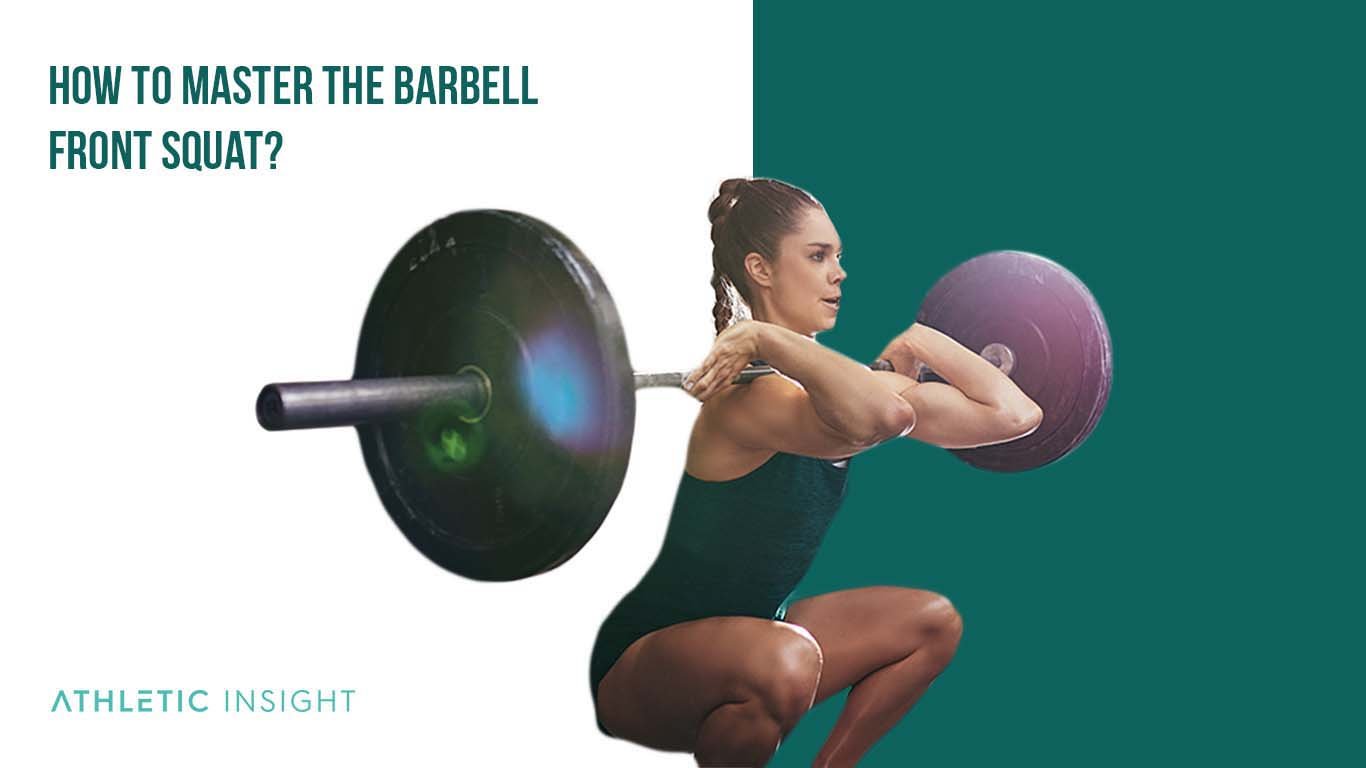
- Begin by crossing the barbell across the front of your shoulders
- Place your fingertips just outside your shoulders on the barbell and drive your elbows up
- Keep your chest up and core tight
- Lower into a squat by bending at the hips and knees until your thighs are parallel to the ground
- Drive up to the starting position by straightening your hips and knees
1. Begin by crossing the barbell across the front of your shoulders
Position the barbell across the front of the body, resting on the shoulders. Alternatively, you can hold dumbbells for a db front squat movement.
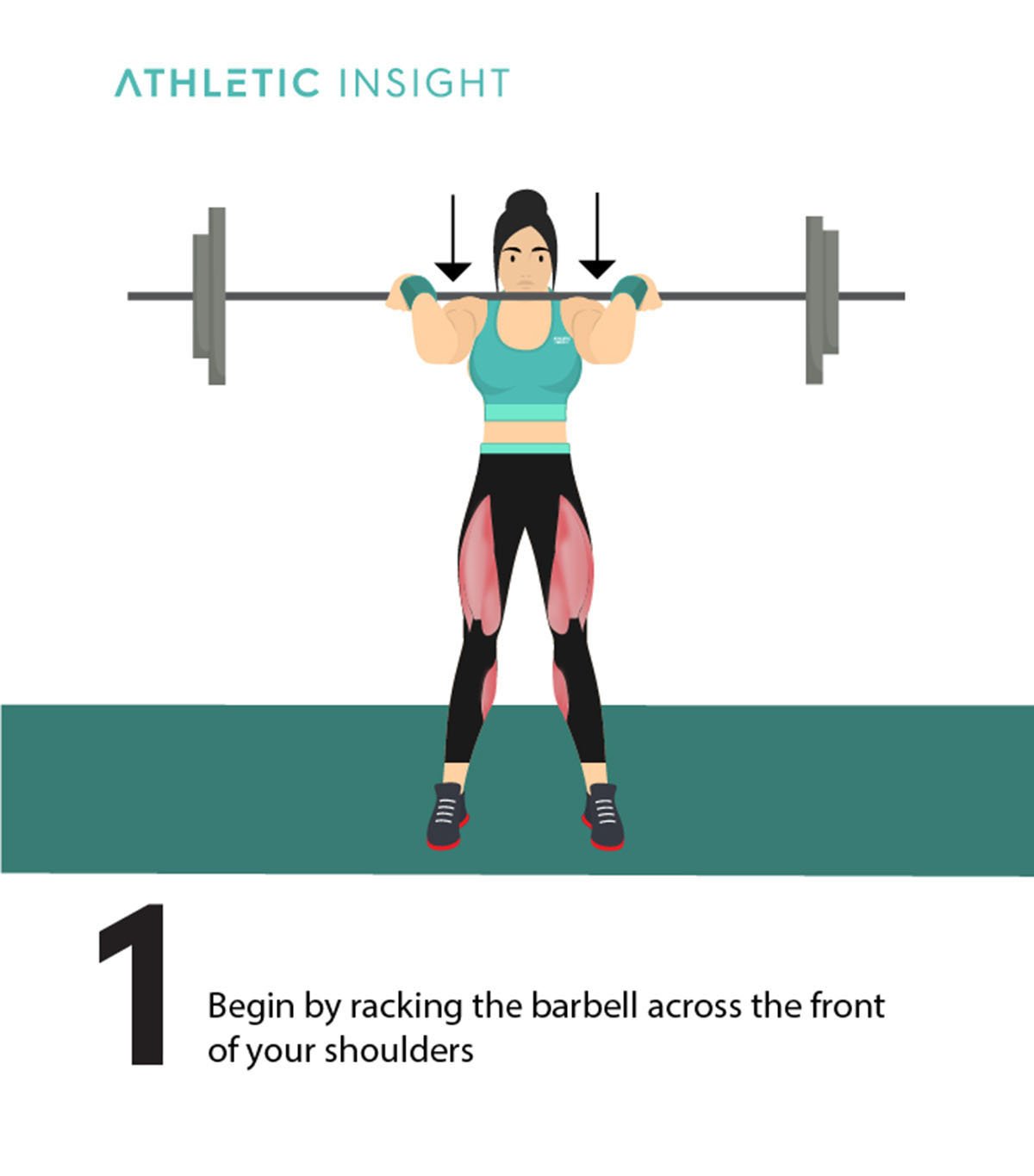
2. Place your fingertips just outside your shoulders on the barbell and drive your elbows up
Keep elbows parallel to the ground to keep the barbell stable and avoid tipping forward. A front squat alternative may include crossing the arms across the chest.
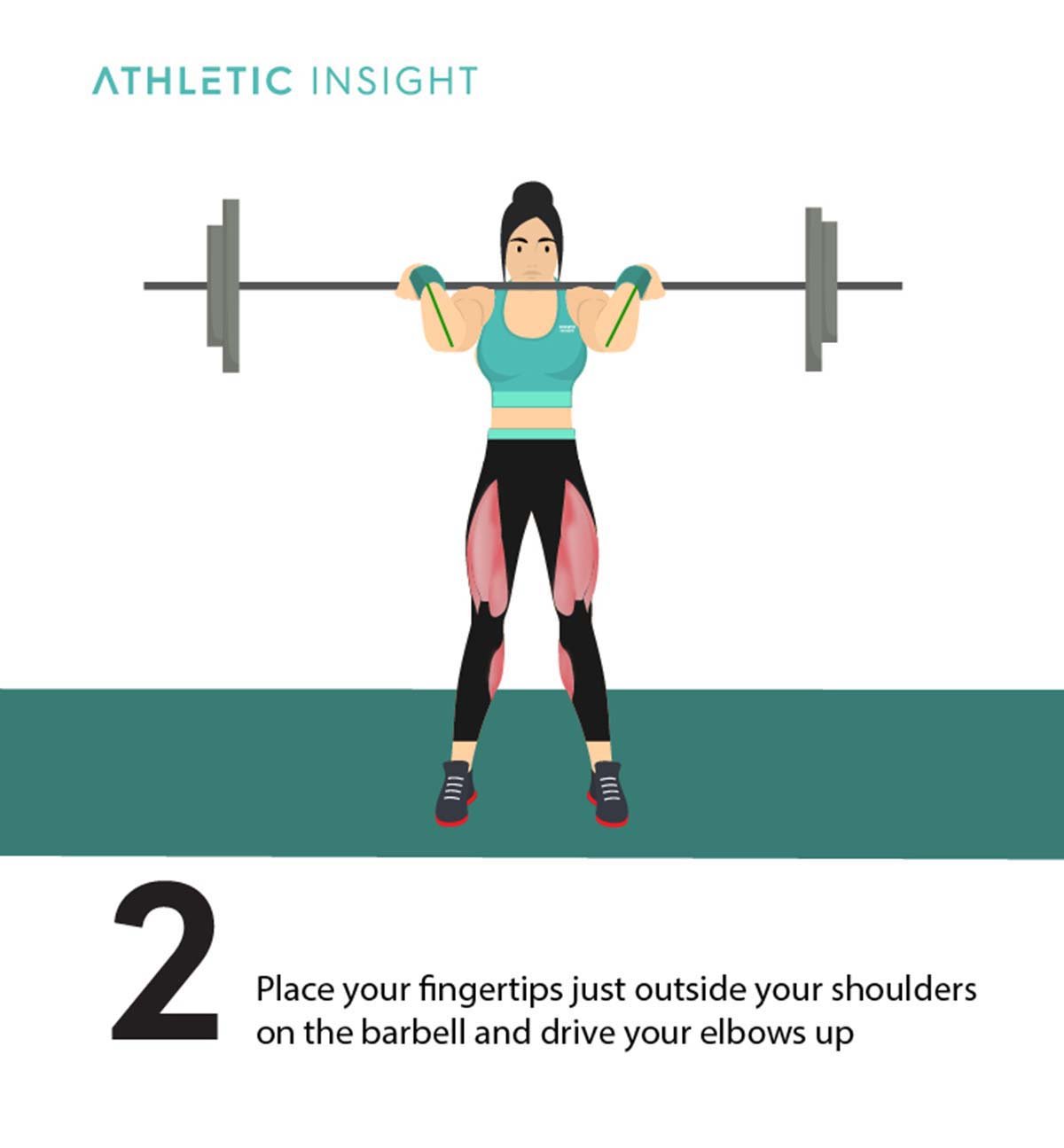
3. Keep your chest up and core tight
The chest must be up and facing front to avoid leaning forward and losing balance with the barbell. An engaged core will help maintain a stable back position. A front squat harness can help add stability for those with back concerns.
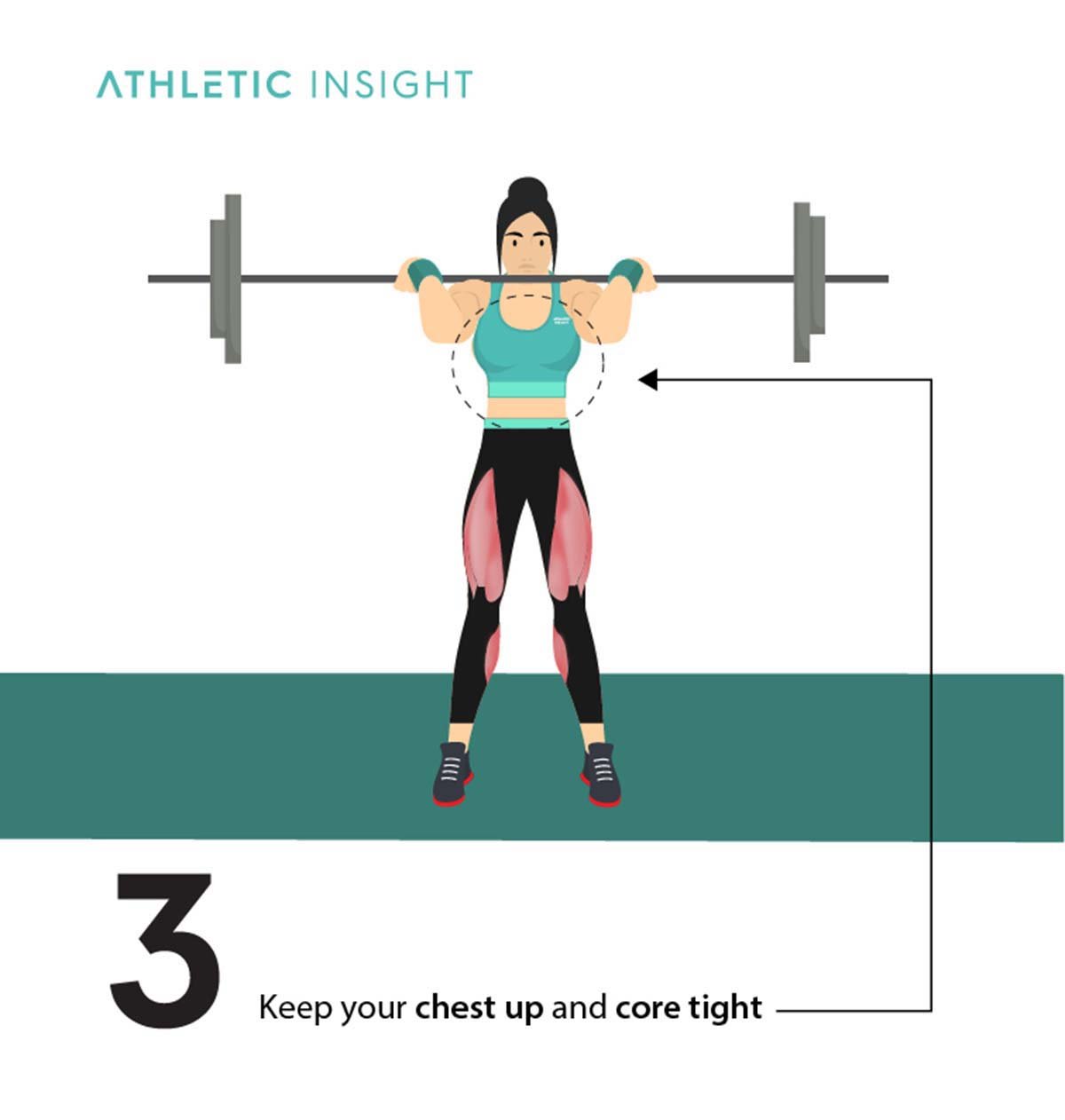
4. Lower into a squat by bending at the hips and knees until your thighs are parallel to the ground
Use slow and controlled movements to descend toward the floor, stopping once the thighs are parallel to the floor.
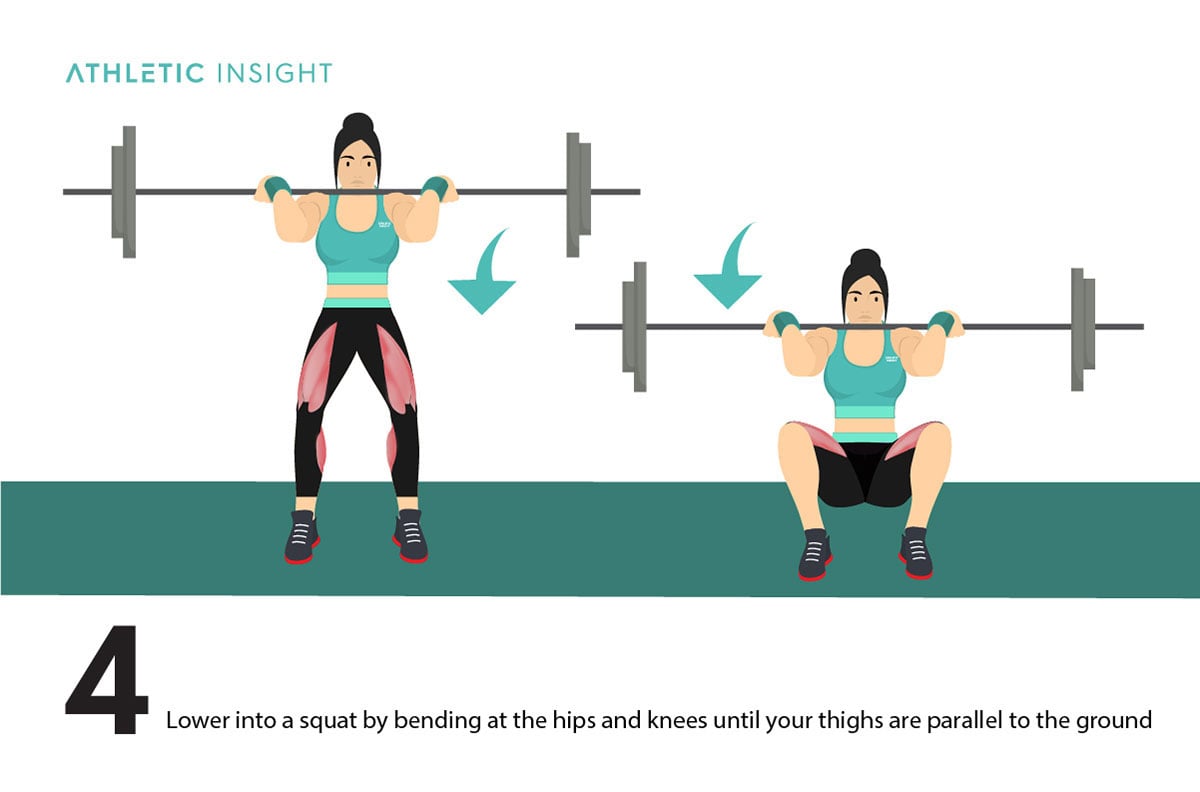
5. Drive up to the starting position by straightening your hips and knees
Use power from the lower body to force the weight up to the top while straightening the knees and hips. The ascension to the starting position is similar when comparing the front vs. back squat, but the force will reside more on the anterior muscles when performing the front squat.
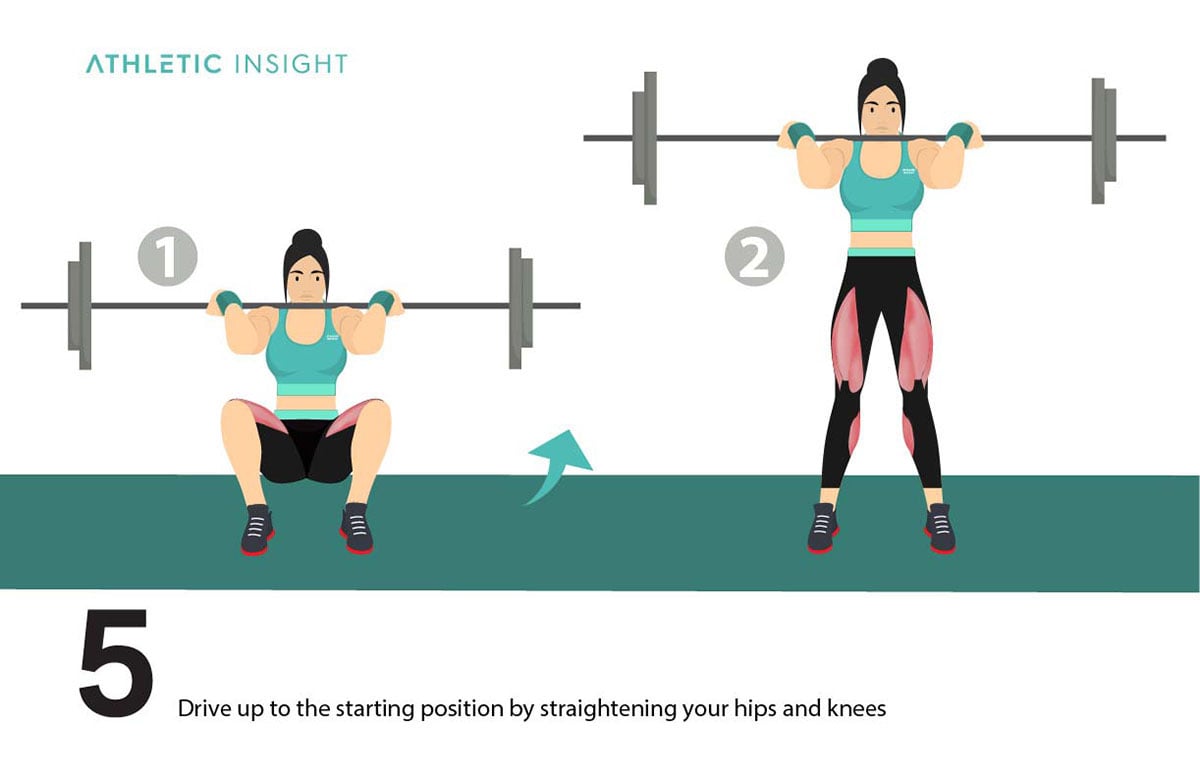
What are the Barbell Front Squat Challenges?
Barbell front squat challenges can boost your exercise routine and bring you out of a slump if you do not see any gains. A compelling challenge will have an end goal in mind, push your limits, and track your progress.
Here are some popular barbell front squat challenges.
1. The bodyweight front squat challenge: Squat bodyweight 50 times in a row without racking the weight.
2. The 10-minute challenge: Perform a squat each minute for 10 minutes, resting in between sets.
3. The front-squat iso hold: Complete a Smith Machine front squat and hold at the bottom for added benefit.
4. Tabata front squat: Use Tabata intervals to perform multiple squat sets.
What are the Barbell Front Squat Variations?
Variations of the barbell front squat include different equipment and varying hand positioning for alternative results. Have a look at some popular variations of the barbell front squat.
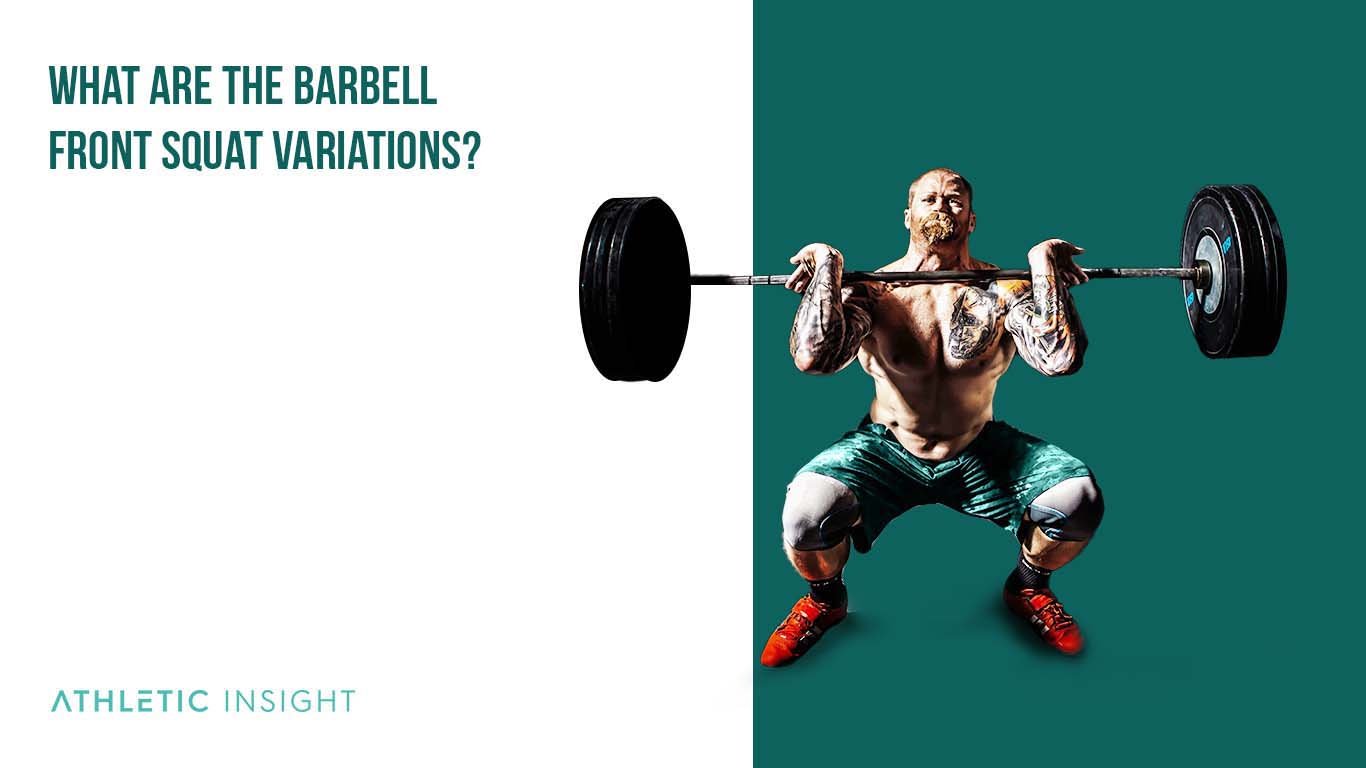
- Clean Grip: Fingertips are just outside of the shoulder width, under the bar.
- Cross Grip: Arms are crossed in front of the body, eliminating wrist stress.
- Clean Grip Using Straps: Hands grip straps just outside of shoulder-width, similar to the clean grip.
- Dumbbell Front Squat: Identical movement, but done with a set of dumbbells rather than a barbell.
- Kettlebell Front Squat: The same movement as before, performed with one or two kettlebell weights, also helping to develop grip strength.
- Elevated heels front squat: Engages the calf muscles more.
- Goblet squat: Requires a goblet weight rather than a barbell.
- Offset kettlebell front squat: Using a kettlebell on one side at a time.
- Band-resisted front squat: Performing the exercise with a resistance band
What is the Necessary Equipment for Barbell Front Squats?
Athletes do not need extensive equipment for a barbell front squat. One of the minimalistic variations is the zombie front squat, where only a barbell and weight are necessary to perform the movement.
Essentially, a barbell front squat requires simple equipment.
- A barbell
- Weight of your choice
Other variations may include straps or a squat rack, but they are unnecessary.
What Is the Origin of Barbell Front Squat?
The long history of bodybuilding has incorporated several famous exercise movements, including the front squat, that have remained through the years. In contrast, others have evolved to include variations for additional benefits.
Moving from barbells to a front squat with dumbbells, this movement is modified to suit individuals of all fitness levels.
Who Named the Barbell Front Squat?
Looking back to the 1970s in the Illustrated History of Bodybuilding by David Webster, he mentions a great British strongman named Thomas Inch. He coins this individual responsible for creating and popularizing the front dumbbell squat.
What Are the Back Muscle Exercises with Barbell Front Squat?
Although squats target the lower body, maintaining proper form will help strengthen the back as well, making this back exercise an optimal choice for back day as well.
- Barbell Front Squat
- Deadlift
- Lat Pull-Down
- Pull-Ups
- Cable Front Squat
What Are the Leg Muscle Exercises with Barbell Front Squat?
For athletes searching for a new leg routine, the barbell front squat is ideal. One popular regime for leg day can consist of the following program if you plan to implement the front squat. You’ll notice that the front squat and back squat should not be done on the same day.
- Barbell Front Squat
- Split Leg Front Squat
- Leg Press
- Deadlift
- Landmine Front Squat
These various movements will engage all the major leg muscles but in varying forms, alternating the amount of stress each receives during the exercise for optimal growth.
What Are the Barbell Front Squat Related Facts?
The barbell front squat has been part of exercise regimes for decades. This prevalence is because the barbell front squat has two benefits.
- It is effective.
- It does not require fancy equipment.
Like the front squat cross grip, variations can change muscle stress, helping to engage the upper back more and develop strong quad muscles.
Does Barbell Front Squat Affect the Hormones?
Regular exercise and routine movements do affect the hormones in the body. Because squat movements require a significant amount of weight, this will trigger several hormone reactions in the body during exercise.
Squatting heavyweights can activate the human growth hormone (HGH), testosterone, and other acute anabolic hormone responses. Consequently, they help in muscle growth, tissue regeneration, and improving an overall sense of well-being.
For gym-goers who want to focus on muscle growth when comparing the goblet squat vs. front squat, the latter comes out on top as the better choice for larger quad muscle development.
Does Barbell Front Squat Increase Testosterone?
Yes, if you want to increase testosterone, front squat bar exercises can help. Testosterone is present anytime there is significant muscle movement as it helps to build lean muscle mass.
With high squat repetitions, an athlete can successfully increase their levels during their time at the gym to help gain more strength and muscle tissue.
Is Barbell Front Squat a Military Movement?
The cross arm front squat is recognizable as a military movement for building quad strength and improving back and core stability.
Is Barbell Front Squat Dangerous?
Consequently, this exercise is easier on the knee joints and wrists, making it a safer alternative than the back squat.
Is Barbell Front Squat Push or Pull?
The bb front squat is a push movement, making it ideal for an exercise regime that includes push days.
Is Barbell Front Squat Essential?
If you prefer not to perform a barbell front squat due to instability issues, you can perform a front squat with dumbbells. This alternative is helpful for beginners building up strength before tackling a barbell.

